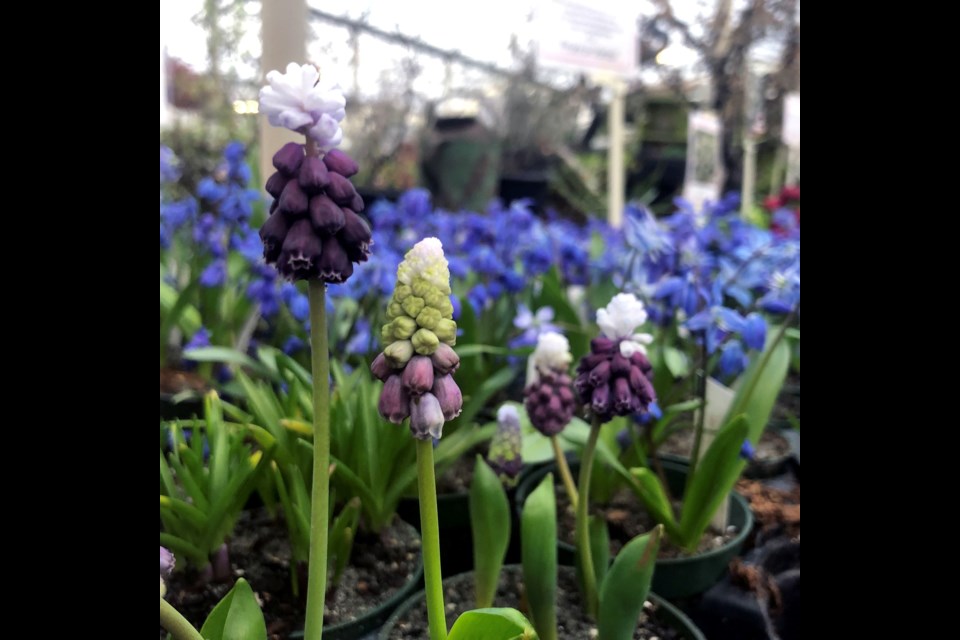Now that many of the summer annuals are winding down and the late perennials are carrying the colour load, it’s a great time to plan and plant your late winter and early spring colour.
The only problem is that many new gardeners are not quite sure just how to go about creating those eye-catching displays.
Being faced with row upon row of all kinds of different bulbs which bloom in assorted colours, at different heights and at various times can be somewhat confusing.
Unless you are a connoisseur, ignore all these hundreds of choices and stick to the basics. Keep it simple. When I was in Keukenhoff Gardens, the world’s ultimate bulb display garden just outside of Amsterdam, the most effective and memorable displays were the ones that had the fewest varieties of bulbs.
What made these displays were the shapes of the plantings and the use of contrasting colours. The secret to effective displays in your garden is to choose different varieties that bloom at the same time and select interesting colour combinations.
Let’s start with the earliest snowdrops. By themselves, they look okay, but if you plant them around the beautiful white helleborus (Christmas Rose), the effect is really quite lovely. It is difficult to find other bulbs that bloom at the same time as snowdrops, so be creative and plant them among the stunning stems of red twig dogwoods or around a large, unique piece of driftwood. Black mondo grass is also a nice companion.
Delightful yellow winter aconites often bloom at the same time or follow right behind snowdrops. Come to think of it, with snowdrops in the center, the two might make an interesting combination. These bulbs look sensational under a wonderful tree, such as a weeping laceleaf Japanese maple. I also like to see them intermingled with the rich purplish-red, winter-flowering heathers, like ‘Kramer’s Red’. Golden foliage varieties, like ‘Mary Helen’ and ‘Evergold’, will also look stunning year after year surrounded by these yellow jewels.
The most charming mid-winter flowers are the miniature irises. These three-inch-high sweeties are right at home in a rock garden, and I also saw them used in window boxes at several homes in Holland.
Far more varieties are available today than ever before, but I still think the deep violet Iris reticulata and its fragrant yellow cousin, I. danfordiae, are the very best. You have to blend the two together for the best effect and put them on the lee side of larger stones for a genuine alpine display.
Once we jump into bulbs that will shine in March, all sorts of possibilities open up.
The sleeper of all bulbs has to be the striking, but often ignored, grape hyacinth (muscari). By themselves, these fragrant perennial bulbs look equally good in rock gardens, on top of rock walls, next to steps, or in sweeping drifts of mass plantings almost anywhere.
I am not quite sure which I like more, the blue or white variety, but let me assure you these are probably the longest lasting, most durable bulbs you can get. Try planting them among ground covers, like ajuga, where the two flowers complement each other.
Muscari also looks great mass planted under early-flowering shrubs and trees, like yellow forsythia, ‘Star’ magnolias, and even early-flowering cherries, like Prunus autumnalis ‘Accolade.'
In Keukenhoff Gardens, they used them extensively as solid borders around hundreds of beds, and the effect was simply breathtaking. Because muscaris bloom longer, they blend beautifully with either yellow or white daffodils, like ‘Flower Carpet’ and the elegant white ‘Thalia’ variety.
Almost any of the single early or ‘Triumph’ tulips will match the blooming season of muscari, and almost any colour of tulip, mingled with white or blue grape hyacinths, makes a great combination.
With so many bulb varieties available today, the possibilities for combinations are limitless, but pre-designed packages make it so much easier. These combinations do best in garden beds. Containers would need to be well insulated in case of severe winter cold.
More and more folks are planting in special bulb trays that look very much like waterlily containers. You simply plant them up in good soil and bury the containers in the ground. You can either lift them up and pop them into containers once the bulbs come up in spring or even better, lift them when they finish blooming to keep your garden looking tidy and let the spent bulbs die down naturally in an out-of-the-way area, for replanting next fall.
Do try some of these delightful combinations for a fabulous display next spring. They are widely available right across the country and with a little effort now, they will be a valuable addition to your garden.





